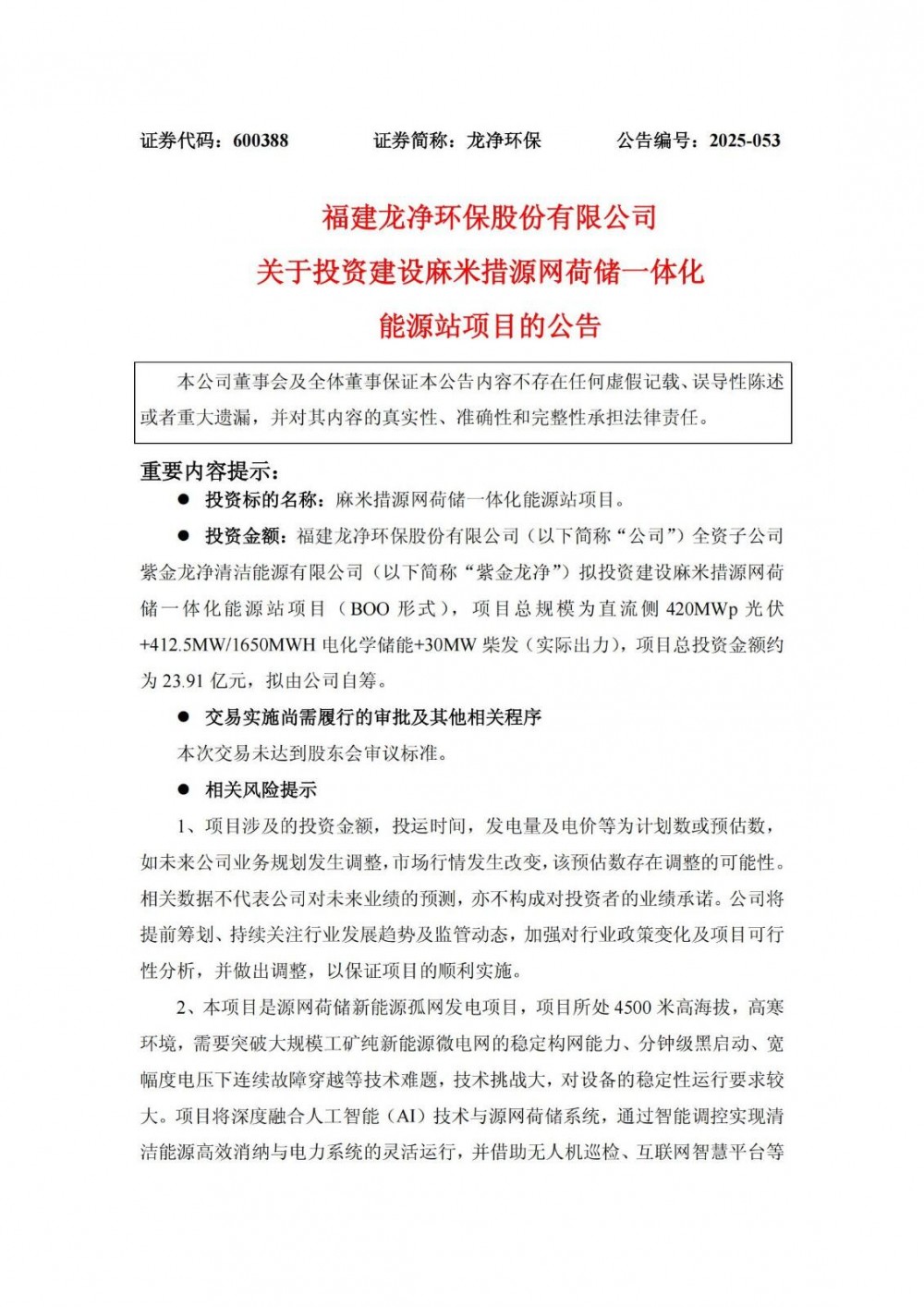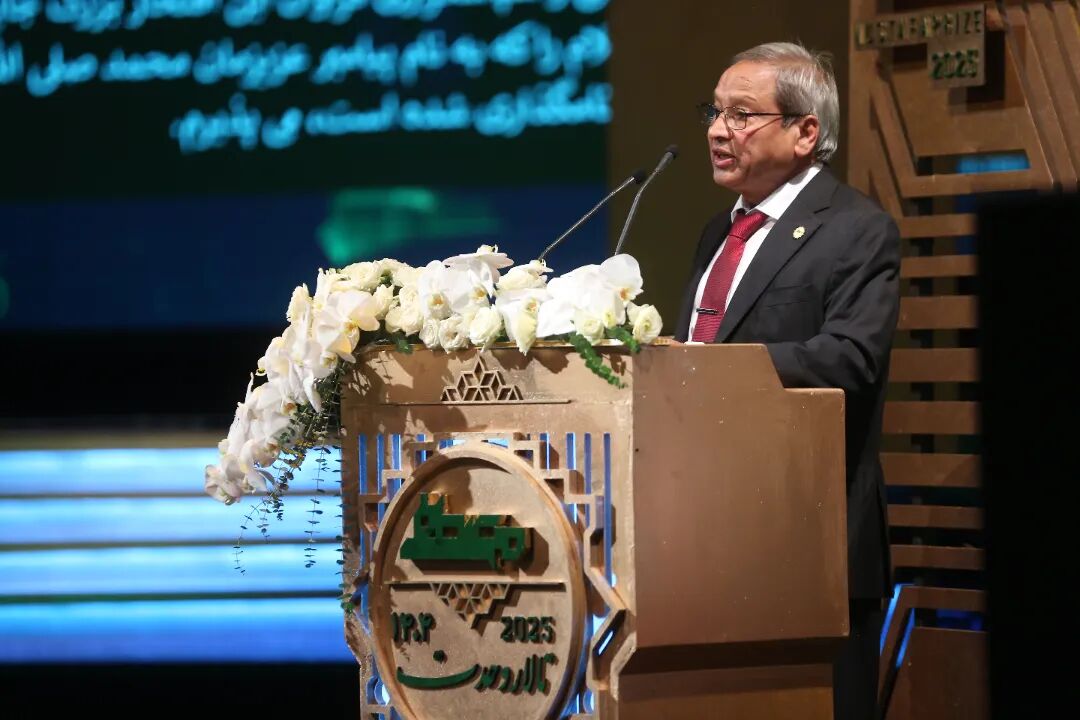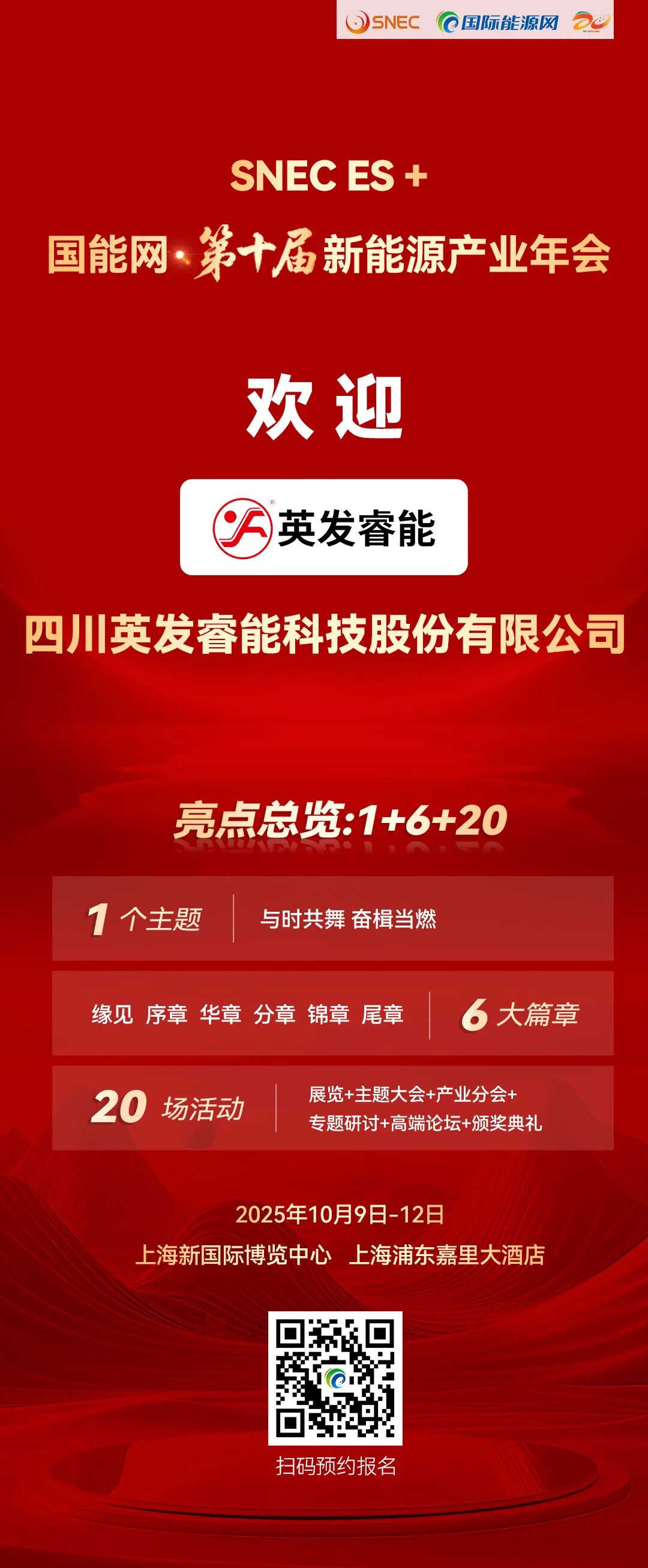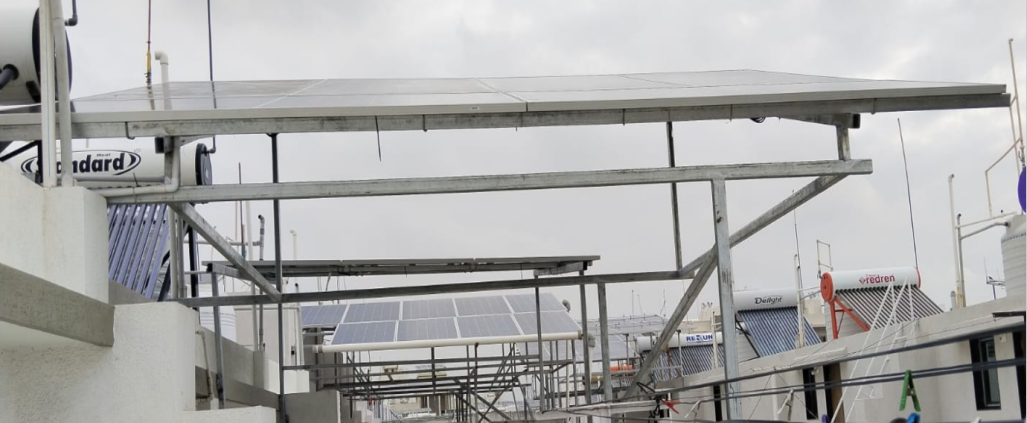德国创新招标机制正处于十字路口,尽管德国的太阳能招标市场正在蓬勃发展,但其限制性设计导致了光伏发电与储能协同项目的数量较少,限制了其经济效益。
Germany’s innovation tender is at a crossroads. While solar auctions are booming in Germany, their restrictive design has led to lower volumes of co-located solar and storage projects, limiting their economic benefit.
为确保创新招标的长期成功并为用户创建一个具有更高成本效益的能源系统,共享储能项目的开发商需要看到更强的业务案例和投资回报。允许储能系统从电网充电并从电力批发市场参与中获得额外收入,将改善项目经济性,并有潜力降低德国日益增加的可再生能源弃风弃光成本。行业领先的储能技术和智能资产性能管理软件可以使资产所有者最大化其市场投资回报。
To secure the long-term success of the innovation tenders and create a cost-effective energy system for ratepayers, the developers of co-located energy storage projects need to see stronger business cases and ROIs. Allowing storage systems to charge electricity from the grid and earn additional revenue from wholesale market participation will improve project economics and has the potential to reduce the ever-increasing cost of renewable curtailment in Germany. Best-in-class storage technology and intelligent asset performance software can then enable asset owners to maximize their market-based returns.
自2020年以来,德国联邦网络署(BNetzA)一直举办每半年一次的容量招标,目标是建设额外的混合发电,包括与基于电池的储能系统相连的光伏电站和风电场。该机构已确定了将波动的可再生能源生产与储能技术相结合的需求,以更有效地集成绿色能源并改善电网管理。通过创新招标,它计划于2028年前向分布式储能系统开发商授予高达4GWh的合同。
Since 2020, Germany’s Federal Network Agency, Bundesnetzagentur (BNetzA), has been holding bi-annual capacity auctions targeting the construction of additional hybrid power generation, including solar parks and wind farms connected to battery-based energy storage systems. The agency has identified the need to combine fluctuating renewable energy production with storage technology to integrate green energy more efficiently and to improve electricity grid management. Through the innovation tenders, it plans to award contracts for up to 4 GWh to developers of distributed energy storage systems by 2028.
招标机制本质上是有缺陷的,因为它不允许储能参与所有可用的能源和辅助服务市场。这使业务案例依赖于上网电价,而不是让业主最大化投资回报。2022年12月和2023年5月的招标轮次证明了这一点,在潜在的800MW中,它只授予了不到100MW的协同项目。然而,随着上网电价的增加,最近的一次招标在9月份显示出更大的兴趣,授予全部400MW的容量。最大设备规模从20MW增加到100MW也可能促成了对创新招标机制的重新关注。具有更好规模经济的大型装置能够参与其中并在2023年5月和9月的招标中获得批准。
The auction mechanism is inherently flawed, as it does not allow energy storage to also participate in all available energy and ancillary services markets. This makes the business case dependent on the feed-in premium rather than allowing owners to maximise revenues. This was exposed by auction rounds in December 2022 and May 2023 which awarded less than 100 MW of co-located assets from a potential 800 MW that was auctioned. However, as feed-in premiums increased, the most recent auction in September saw a greater interest, awarding the entire 400 MW volume. The increase of the maximum asset size from 20 MW to 100 MW may have also contributed to the renewed interest in the Innovation Tender. Larger installations with better economy of scale were able to participate and were awarded in both the May and September auctions of 2023.
在行业内,固定上网电价转变为浮动市场溢价的决定在2022年12月第一次招标轮次失败前备受争议。上网电价结构不如监管机构BNetzA确立的绝对上限重要。这两项新规则都是在通胀压力(主要因乌克兰战争导致)开始对能源行业造成影响的时候实施的,可再生能源开发商面临前所未有的高昂材料成本。随着通胀率触发利率上升,可再生能源项目的资本成本也在上升。因此,项目融资的第二个主要变量发生了重大变化,需要在招标设计中考虑进去。
Within the industry, the switch from a fixed feed-in premium to a floating market premium prior to the first failed tender round in December 2022 was hotly debated. Less important than the structure of the premium was the new absolute cap established by the regulator BNetzA. Both new structure and the cap were implemented at a time when inflationary pressures, largely resulting from the war in Ukraine, were starting to take their toll on the energy industry, with renewable energy developers facing unprecedentedly high costs of materials. As inflation levels triggered interest rate increases, capital costs for renewable projects also increased. Hence, the second main variable in project financing saw major changes that needed to be accounted for in the tender design.
意识到有必要干预,BNetzA于2023年3月宣布将混合光伏供电电池系统的最高上网电价提高25%至9.18欧分/KWh。2023年5月的招标获得了更多报价,但仍不足以令更多项目通过。巴登-符腾堡州太阳能和氢能研究中心(ZSW)开展的研究表明,2025年投入运行的混合发电厂的平均成本为10.40欧分/KWh,远高于调整后的电价。
Realising the need for intervention, BNetzA announced in March 2023 a 25% increase in the maximum feed-in-tariff for hybrid pv-powered battery systems to 9.18 ct/kWh. The auction in May 2023 yielded more bids but was still insufficient for more projects to go forward. Research carried out by The Centre for Solar Energy and Hydrogen Research Baden-Württemberg (ZSW) showed that average costs for a hybrid power generation plant to be taken into operation in 2025 were 10.40 ct/kWh, well above the adapted tariff.
创新招标在德国能源转型中的角色
The role of innovation tenders in the German energy transition
当前的能源危机使得向可再生能源的智能集成的需求重新成为关注重点,而德国的绿色发电建设正在蓬勃发展。到2023年10月底,德国已见证近12GW的新光伏装机容量的安装,已经超过了9GW的年度目标。2024年和2025年的年度目标甚至更高,分别达到13GW和20GW。
The current energy crisis brought the need for smart integration of renewables into renewed focus with the build-out of green generation booming in Germany. By the end of October 2023, Germany has witnessed the installation of nearly 12 GW of new PV capacity, already outpacing the annual target of 9 GW. Annual targets for 2024 and 2025 are even higher, reaching 13 GW and 20 GW respectively.
与此同时,系统中的高比例太阳能导致了创纪录的负定价时段。例如,5月28日德国出现了8小时连续负定价,最高达130欧元/MWh。随着更多光伏发电的集成,负定价将成为欧洲电力系统的常态。
At the same time, high shares of solar on the system have led to record-breaking periods of negative pricing. On May 28, for example, Germany saw eight hours of consecutive negative pricing, peaking at around -130€/MWh. As more solar is being integrated, negative pricing will become a common feature in the European power system.
这就是为什么并网发电+储能系统可以创造增量价值。它们可以在光伏发电量最高时存储电力,并在可再生电量最低时释放给消费者。并网可再生发电和储能系统减少了能源市场的波动性和价差,限制了电网拥堵和成本高昂的弃风弃光,并使整个系统更加可持续和高效。
This is where co-located generation + storage systems create incremental value. They enable the electricity generated by PV to be stored when the production is the highest and release it to consumers when renewable electricity shares are at the lowest. Co-located renewable generation and storage systems reduce volatility and price spreads on energy markets, limit congestions on the power grid and costly curtailment, and make the overall system more sustainable and efficient.
智能招标设计变革的必要性
The Need for Smart Tender Design Changes
储能的收入机会正在那里。不幸的是,创新招标的当前设计不允许储能获得这些机会。
The revenue opportunities for storage are there. Unfortunately, the current design of the innovation tender does not allow storage to access them.
传统的解决方案是进一步提高创新招标上限,使其完全体现成本上升。这将给项目开发商带来更高的付费保证,并提高项目经济性。弊端是这可能增加上网电价付款,增加终端用户即纳税人的成本。然而,在独立储能资产快速增长的国家,依赖监管机构来确定合适的上网电价不应该成为主要做法。
The traditional solution would be to further increase the innovation tender premium cap to a price level that fully recognizes the increased system costs. This would result in higher payment guarantees for project developers and better project economics. On the downside, it would potentially increase pay-outs under feed-in regimes, increasing the cost for taxpayers. However, dependence on the regulator to define the right level of a feed-in premium should not be the modus operandi in a country that is building market-based stand-alone storage assets at an increasing pace.
目前,创新招标下合同的储能系统只能存储并网可再生发电资产产生的电力,不能从主网充电。BNetzA实施这一规则是为了避免混合绿色电力和化石燃料电力,限制灰色电力的“绿化”。这一规则也被视为一种保障,以防止创新招标下获得的储能资产参与利润丰厚的频率调节市场(FCR),在那里它会与完全商业化的发电资产竞争。
Today, energy storage systems contracted under the innovation tenders can only store electricity generated by the co-located renewable generation assets and cannot charge from the main grid. BNetzA has put this rule in place to avoid blending green electricity with fossil-based power, limiting the greenwashing of grey electricity. This rule is also seen as a safeguard to exclude storage assets awarded under the innovation tenders to participate in the lucrative frequency regulation market (FCR), where it would compete as a subsidized asset against fully merchant assets.
不幸的是,目前政策制定损害了储能技术的全部潜力,以及其整合可再生能源到电网和提供急需灵活性的能力。结果,太阳能+储能系统在一年中的大部分时间闲置,例如在夜间和低发电冬季。取而代之的是,燃气和燃煤发电厂被启用以填补电力供应缺口。如果德国仍然希望在2030年将80%的总发电量来自可再生能源源,并在2035年前在电力行业实现净零排放,这一状况就需要改变。
Unfortunately, the policy in its current shape undermines the full potential of energy storage technology, its ability to integrate renewable energy into the power network, and provide much-needed flexibility. In consequence, solar + storage systems sit unused for a large part of the year, for example, at night and during low-production winter months. Instead, gas and coal-fired power plants are ramped up to fill electricity supply gaps. This needs to change if Germany still wants to reach its goal of sourcing 80% of gross power consumption from renewable energy sources by 2030 and reach net-zero in the electricity sector by 2035.
储能系统的高效利用还将降低网络成本,因为当网络过载无法集成更多可再生能源时,电网运营商目前正在向资产所有者支付大量的弃风弃光费用。仅2022年,德国就弃风弃光了8万亿瓦时的可再生能源,主要是风电。这是巨大的绿色电力损失,然而这些电力完全可以充电传输到储能系统中,同年德国电网设施阻塞造成的费用损失高达42.5亿欧元
Efficient use of energy storage systems will also lower network costs as grid operators currently pay substantial curtailment fees to asset owners when the network is overloaded and cannot integrate more renewables. In 2022, 8 TWh of renewable power, mainly wind, was curtailed in Germany alone. This is an enormous loss of green electricity which could have been transmitted into storage systems. The cost of congestion of the German grid reached €4.25bn in the same year.
允许储能资产在批发市场中优化不仅会减少电网阻塞和弃风弃光情况,还将提高批发市场的效率,改善创新招标项目的经济性,从而降低纳税人和电力消费者的成本。Fluence正积极参与(与行业利益相关者和协会共同)推动这些监管变革。
Allowing energy storage assets to optimize in wholesale markets will not only limit congestions and curtailments, but also increase the efficiency of wholesale markets, improve innovation tender project economics, and thereby reduce costs to taxpayers and electricity consumers alike. Fluence is actively engaging – jointly with industry stakeholders and associations – to drive those regulatory changes.
最大化并网资产的回报率
Maximizing Returns for Co-located Assets
除了招标设计和技术合作伙伴外,资产使用寿命期间的性能优化是影响项目经济性的第三大因素。
Optimization of asset performance during its lifetime is the third major factor, apart from tender design and technology partners, that impacts project economics.
并网可再生能源和储能资产的项目复杂性更高,需要业主和运营商仔细平衡收入最大化和成本控制。资产管理团队面临的挑战通常与处理的数据量有关。对于由不同技术和OEM的多个发电厂组成的许多投资组合,传统的人工数据收集方法会成为约束,迫使团队寻找现代资产性能管理(APM)工具。
Projects with co-located renewables and storage assets have increased levels of complexity, requiring their owners and operators to carefully balance revenue maximization and cost control. The challenges asset management teams face are typically tied with the amounts of data handled. With many portfolios composed of several plants of varying technologies and OEMs, traditional methods of manual data collection become a constraint, compelling teams to look for modern asset performance management (APM) tools.
APM使混合可再生能源和储能项目的业主能够发掘隐藏的潜在性能问题,从而最小化停机时间并提高运营效率和整体资产性能。随着APM技术的快速发展,人工智能(AI)在性能监测和完全优化方面发挥着枢纽作用。AI改进APM的一些特点与快速分析大量数据以发现团队通过分析SCADA信号无法捕捉的复杂模式和异常的能力相关。
APM empowers owners of hybrid renewable and storage projects to unearth hidden latent performance issues, thereby minimizing downtime, and enhancing operational efficiency and overall asset performance. As APM technologies evolve quickly, artificial intelligence (AI) plays a pivotal role not just to monitor performance but fully optimize it. Some of AI’s improvements on APM correlate to the capacity to swiftly analyze large amounts of data to unveil intricate patterns and anomalies that may be difficult or impossible for teams to capture by sifting through SCADA signals.
例如,AI通过预测电池温度何时会高于预期来支持储能资产的运营商。该模型预测在给定运行条件下最大电池温度应该是多少,并在测量温度超过该值一定甚至最小的阈值或呈现令人担忧的趋势时发出警告。类似的也适用于提前预测可再生发电资产的潜在故障。
For instance, AI supports operators of storage assets by anticipating when cell temperatures may get higher than expected. The model predicts what the maximum cell temperature should be under the given operating conditions and issues warnings if the measured temperature exceeds that value by a certain, even minimal, threshold or exhibits a worrying trend. Similar goes for early prediction of potential malfunction of renewable generation assets.
结论
Conclusion
德国的创新招标是该国能源转型的重要基石,因为它有助于激励高效集成大量波动的绿色电子进入德国电力市场。支持可再生能源的建设与储能相结合还将增强供给安全并为日益分散的能源系统引入灵活性选择。
Germany’s Innovation Tenders are important cornerstones of the country’s energy transition as they serve to incentivize efficient integration of the vast amounts of intermittent green electrons set to enter the German power market. Supporting the build-out of renewable energy in combination with energy storage will also enhance security of supply and introduce flexibility options to an increasingly decentralized energy system.
然而,招标的监管框架需要更好地适应当前的商业环境。随着通胀压力给项目业务案例带来风险,需要更深入的措施来全面改革创新招标机制。
However, the tender’s regulatory framing needs to be better adapted to the current commercial circumstances. With inflationary pressures putting project business cases at risk, more far-reaching measures are needed to overhaul the innovation tender mechanism.
智能招标设计允许储能系统从电网充电并从批发市场参与中获得额外收入,这将改善项目经济性,并有可能降低德国日益增加的可再生能源弃风弃光的成本。同时,项目所有者和开发商也需要与富有经验和值得信赖的技术提供商合作,以最小化风险并最大化收益。
Smart tender design, allowing storage systems to charge electricity from the grid and earn additional revenue from wholesale market participation, will improve project economics and has the potential to reduce the ever-increasing cost of renewable curtailment in Germany. At the same time, it is down to project owners and developers to work with experienced and trusted technology providers to minimize risks and maximize returns.
 中国能源资讯网
中国能源资讯网


